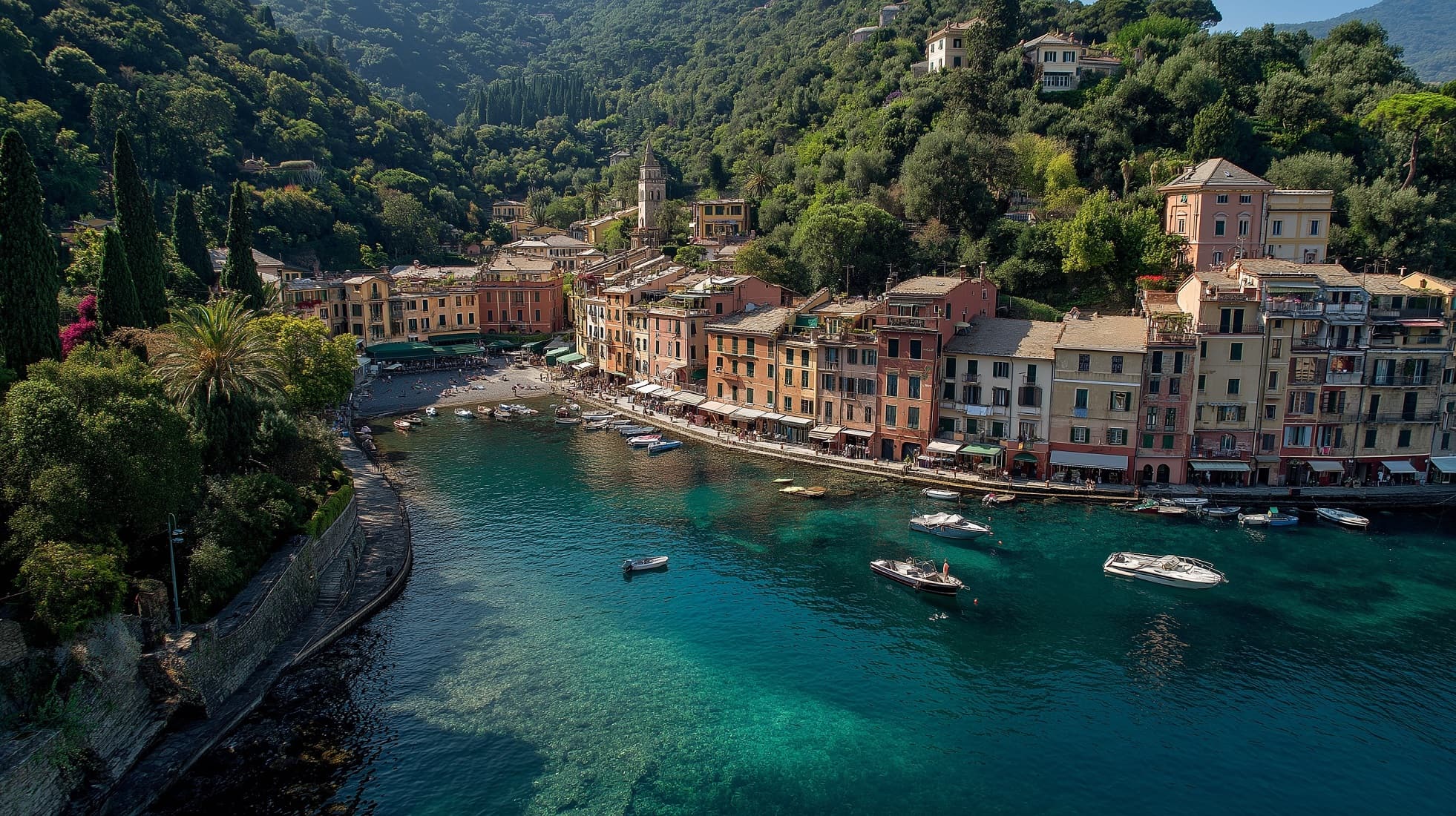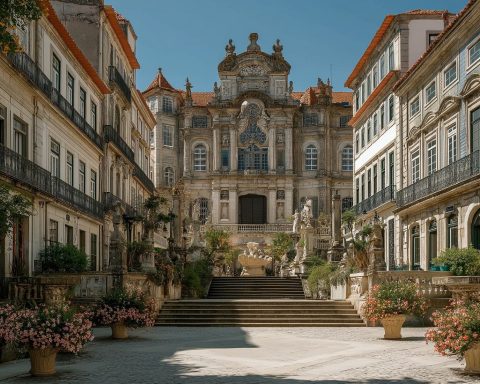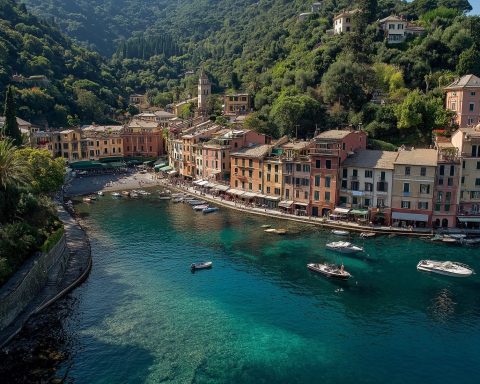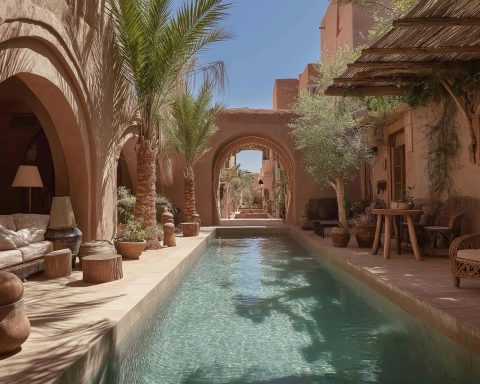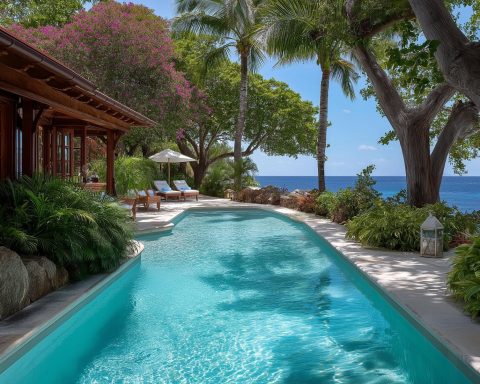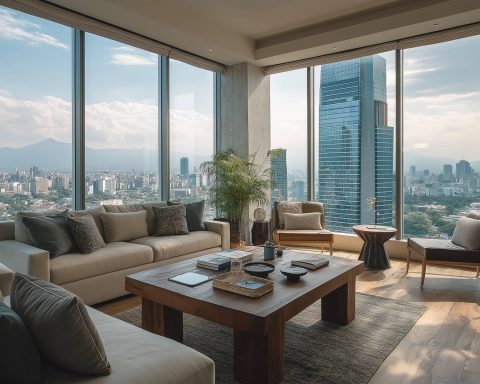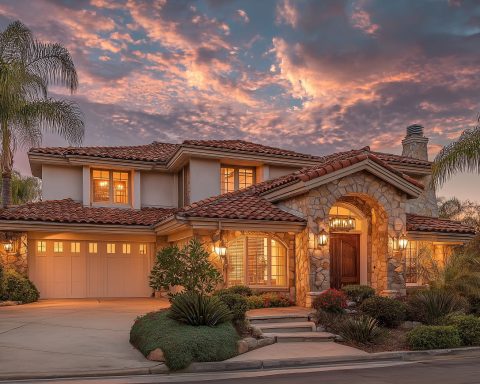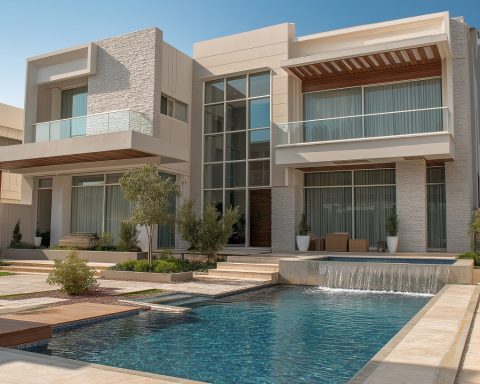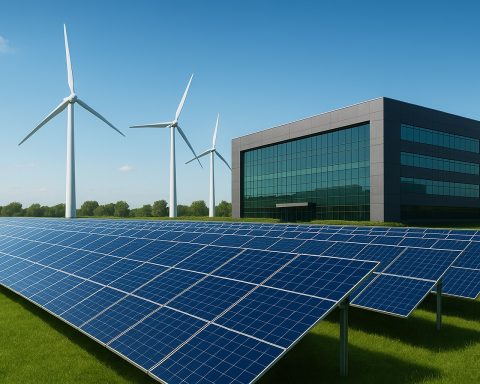Market Overview
Portofino, a small fishing village turned international luxury destination, boasts one of the highest property prices in Italy, reflecting its exclusivity and limited supply. As of 2025, Portofino’s residential real estate averages around €8,000 per square meter, the highest in Italy citizenx.com and far above the national average. The market encompasses ultra-luxury villas perched on lush hillsides, quaint harborfront apartments, and a handful of commercial properties catering to high-end tourism. Despite global economic uncertainties, Portofino’s real estate sector remains robust – insulated by an affluent buyer base and the town’s perennial appeal. International high-net-worth buyers view Portofino as a safe investment and lifestyle trophy, drawn by its blend of natural beauty, upscale amenities, and Italian charm idealista.it idealista.it.
Key features of Portofino’s real estate market in 2025:
- Ultra-High Prices: Residential values are among the highest in Europe’s resort markets, rivaling Capri and Côte d’Azur locales voronoiapp.com immobiliare.it. In May 2025, Portofino’s average asking price was €7,955/m², up 2.9% year-on-year immobiliare.it.
- Predominantly Luxury Segment: The majority of transactions involve luxury second homes or investment properties purchased by overseas buyers. About 70% of luxury property buyers in Italy are foreign idealista.it, a trend clearly reflected in Portofino.
- Limited Supply: Strict planning regulations and the town’s geography (nestled in a protected park and coastal area) severely limit new construction. Housing inventory is tiny, and properties often stay in families for generations or trade off-market, keeping supply perpetually scarce.
- Strong Tourism-Driven Demand: Portofino’s status as a jet-set destination sustains a thriving short-term rental and hospitality market. Luxury tourism accounted for about 25% of Italy’s tourism industry in 2024 luxurytribune.com, and Portofino/Tigullio boasts the nation’s highest density of five-star hotels luxurytribune.com – a reflection of the affluent visitors who also drive property demand.
Overall, Portofino’s real estate market in 2025 is characterized by resilience and exclusivity. Below, we delve into each segment – residential (including luxury), commercial, pricing trends, future outlook, and how Portofino compares with other elite markets – drawing on the latest data and expert analyses.
Residential Real Estate in Portofino
Residential properties in Portofino range from intimate village apartments to grand seaside villas, virtually all commanding premium prices. The average home price in Portofino far exceeds typical Italian markets: for context, Portofino’s €7,955/m² in May 2025 dwarfs even upscale cities (Milan averages ~€5,000/m²; Rome ~€3,600/m²) citizenx.com immobiliare.it. In fact, Portofino ranks as Italy’s most expensive residential area, slightly ahead of Capri (which averaged €8,849/m² around the same time) immobiliare.it immobiliare.it. It also far surpasses neighboring towns on the Ligurian coast – for example, nearby Santa Margherita Ligure averages about €5,942/m² immobiliare.it.
Historical trend: Portofino’s home values have been consistently high for decades, reflecting its exclusive reputation. Recent years saw notable fluctuations due to broader economic factors and post-pandemic dynamics. Over 2023-2024, prices experienced some volatility: the average asking price peaked in July 2023 at roughly €9,607/m², then dipped to a low of about €7,023/m² in March 2024, before recovering in 2025 immobiliare.it. This pattern suggests a brief correction after an overheated 2022-2023 (when pent-up international demand and scarce listings drove prices to a record high), followed by stabilization and modest growth in late 2024 and 2025. Even at the low point, Portofino’s prices remained unparalleled nationally, underlining the market’s resilience.
Current pricing (2025): As of mid-2025, typical residential listings span from smaller apartments in the harbor area (often €1–3 million for modest sizes) to sprawling villas on the surrounding hills that can easily ask €10–30+ million depending on pedigree and view. The median listing price, according to local market reports, is around €8 million for a multi-bedroom villa, with ultra-prime properties exceeding that. On a per-square-meter basis, €8,000–€10,000/m² is common for well-sited homes immobiliare.it. For example, a waterfront 3-bedroom home of ~200 m² might list for €8–9 million. Such pricing puts Portofino on par with exclusive global enclaves – a Knight Frank index ranked Portofino’s prime residential values among the top 15 worldwide, at roughly $15,000 per m² (≈€13,500) voronoiapp.com. By comparison, this is similar to prime values in Cannes or Saint-Tropez, albeit still below Monaco’s stratospheric ~$50,000/m² rates.
Rental market: Residential rentals in Portofino are likewise exceptionally pricey. Long-term rental supply is very limited (many owners do not rent out their second homes), but when available, asking rents in 2025 averaged €34.6 per m² per month immobiliare.it – about €3,460 monthly for a 100 m² apartment. This represents a 16.5% jump from a year prior immobiliare.it, indicating surging demand for rentals. Notably, rental rates in Portofino are over three times the provincial average (€10.5/m²) immobiliare.it. The summer tourist season also sees a booming short-term rental market: villas and luxury apartments can fetch tens of thousands of euros per week from affluent vacationers. (For instance, a cliffside villa with pool might rent for €20,000+ per week in July-August.) Rental yields, however, remain moderate given the extremely high capital values – investors might see net yields around 2–3% in this market, meaning properties are often bought more for capital appreciation and lifestyle than for income.
Residential development: New residential development in Portofino is virtually non-existent due to conservation rules – the town is encircled by the Portofino Regional Park and Marine Reserve, severely restricting new construction. Renovation of existing structures is the primary activity. Many older houses have been refurbished to modern luxury standards, often under strict architectural supervision to preserve Portofino’s historic character. One notable pattern is the conversion of historic buildings into high-end residences or boutique condos, though each project is bespoke and rare. Essentially, the residential market is a finite, jewel-box inventory, which underpins long-term value: even during broader real estate downturns, Portofino sees very few “distressed” sales and often simply experiences a pause in transactions rather than significant price drops. Owners are typically wealthy and under no pressure to sell; buyers are waiting in the wings for the right property to become available, sometimes for years. As a result, demand consistently exceeds supply, and pricing remains robust.
Luxury Property Segment
Portofino’s entire market could be described as “luxury,” but within it lies an ultra-prime segment of truly exceptional estates and villas that attract global billionaires. These trophy properties – often large historic villas with panoramic sea views, private gardens, pools, and direct waterfront access – command premium prices and intense interest from international buyers. In 2024 and 2025, several high-profile transactions and developments underscored the strength of this luxury segment:
- Record-setting Villa Sales: Villa Buonaccordo, a famous pastel-yellow mansion overlooking Portofino bay, sold to a Chinese tech entrepreneur for an estimated €30–35 million theguardian.com magazine.greatestate.it. Likewise, Villa Altachiara (the former estate of Countess Vacca Augusta) was purchased by a Russian buyer for around €25 million magazine.greatestate.it. These sales highlight that buyers from China, Russia, the US, and beyond are willing to pay top dollar for Portofino’s finest addresses. Notably, these deals were facilitated by Italy’s tax incentives (the flat-tax regime) that encourage wealthy individuals to establish residency magazine.greatestate.it theguardian.com. Agents report that €20M+ listings in Portofino now regularly draw interest from abroad, seen as relative bargains “for the same price as a flat in London’s Knightsbridge” theguardian.com.
- Celebrity and Tycoon Investments: Bernard Arnault, CEO of LVMH and the world’s richest person, has shown a personal passion for Portofino – through LVMH’s hotel arm (Belmond) he has acquired and renovated luxury properties in the area realinvest.co.uk realinvest.co.uk. Meanwhile, members of the Berlusconi family (one of Italy’s richest) own estates here, and fashion designers (like Dolce & Gabbana) have famously owned Portofino homes. Such high-profile owners both reflect and perpetuate the town’s cachet. When villas owned by famous names hit the market, they often garner international press. For example, a historic villa long owned by Pier Silvio Berlusconi (Silvio Berlusconi’s son) has been undergoing renovation to become his family’s residence, with local media valuing it around €20 million affaritaliani.it affaritaliani.it. The allure of owning a piece of Portofino continues to draw UHNWI (ultra-high-net-worth individuals), from tech executives to European aristocracy.
- Luxury Price Growth: According to Knight Frank’s Prime International Residential Index, Portofino’s luxury home prices rose about +7.1% in 2024, one of the fastest growth rates globally (16th in the PIRI100 index) idealista.it. This growth outpaced luxury markets in Florence, Milan, and Rome idealista.it, indicating that resort and lifestyle locations like Portofino have been leading the high-end market. Similarly, Savills reported that Italy’s “second-home” markets (which include Portofino) saw price increases (~+6–7%) in 2023, outperforming primary city markets mansionglobal.com mansionglobal.com. Tight supply of luxury villas – many of which are one-of-a-kind – has created competitive bidding in some cases, driving prices upward. Even in a high interest rate environment, these purchases are often all-cash, so buyer sentiment and wealth trends (stock market gains, etc.) influence prices more than financing costs.
- Ongoing Luxury Developments: A remarkable trend is the entry of international luxury brands and developers into Portofino’s property scene, viewing it as a long-term investment. In late 2024, for instance, the Fort Partners group (associated with Four Seasons Hotels) acquired Castello San Giorgio, a 1,200 m² clifftop castle overlooking the bay, reportedly for over €60 million luxurytribune.com. Renovation work is underway to transform it, possibly into a ultra-luxury boutique hotel or residences (the planned use is closely watched, as Four Seasons’ involvement hints at a new luxury hospitality offering). Additionally, LVMH’s Belmond in 2021 bought Villa Beatrice, another prestigious Portofino property, further cementing the luxury conglomerate’s footprint luxurytribune.com luxurytribune.com. These moves signal confidence that Portofino’s ultra-prime real estate will continue to appreciate and serve as a magnet for the world’s elite.
Overall, the luxury segment in Portofino is defined by prestige, privacy, and investment by the global elite. Buyer demographics here skew towards billionaires and centi-millionaires who often have multiple homes worldwide. They prize Portofino for its unique mix of glamour and seclusion – a place where megayachts bob in a tiny harbor under a backdrop of verdant hills studded with villas. Industry experts note that foreign interest remains high: luxury brokers report surging inquiries from North America, Northern Europe, and the Middle East in particular. With Italy’s favorable tax regime and the “Dolce Vita” appeal, Portofino’s trophy properties are likely to remain in international demand for the foreseeable future. Knight Frank’s outlook for 2025 underscores that Italy’s prime markets (especially in Liguria and Tuscany) are poised to remain resilient thanks to steady international demand and relative value for money compared to other elite destinations idealista.it.
Commercial and Hospitality Real Estate
Aside from residences, Portofino’s real estate also includes commercial assets – primarily in the hospitality and retail sectors, which directly tie into the area’s luxury tourism economy. While the town is small (under 500 residents), it hosts a significant number of upscale establishments (boutique hotels, restaurants, designer shops) to serve its high-end visitors. Key aspects of the commercial market in 2025 include:
- Luxury Hotels: Portofino and the surrounding Riviera towns have an outsized share of five-star hotels. The Tigullio region (encompassing Portofino, Santa Margherita Ligure, Rapallo, etc.) counts six 5-star hotels, one of the highest concentrations in Italy luxurytribune.com. In Portofino proper, the crown jewel is the Belmond Hotel Splendido, a legendary hilltop hotel (once a monastery) with commanding views of the bay. The Splendido – along with its sister property Splendido Mare by the harbor – has been undergoing a multi-year renovation under LVMH’s ownership realinvest.co.uk realinvest.co.uk. This renovation (initiated in 2023 and continuing through 2024/25) is aimed at “heritage preservation” and elevating the guest experience, with upgrades like a new pool area and redesigned suites realinvest.co.uk. The phased restoration, led by renowned designers, underscores confidence in Portofino’s tourism future: Belmond is effectively future-proofing an icon to keep it at the pinnacle of luxury travel. In June 2025, Belmond announced that Hotel Splendido will re-open in a “new era of splendour” by next summer instagram.com, highlighting enhancements that blend historic charm with modern ultra-luxury. The expectation is that room rates (already €1,000+ per night for standard rooms in high season) will climb even higher after the refurbishments.
- Emerging Hotel Projects: A significant development is the planned revival of the Portofino Kulm Hotel. This historic grand hotel, perched atop the Portofino mountain (in a park above the town), had been closed for decades. In December 2024, the Milan-based AKNO Group acquired Hotel Portofino Kulm with the intent to restore it to a top-tier luxury resort aknogroup.com aknogroup.com. The Kulm, an Art Nouveau landmark from 1906, will undergo an ambitious redevelopment combining heritage preservation with modern amenities aknogroup.com. AKNO Group’s plan aims to “restore it to its former glory” as a world-class destination aknogroup.com aknogroup.com. This project, once completed in a few years, will add to Portofino’s luxury hospitality inventory and is expected to bolster the region’s appeal. The reopening of a storied property like the Kulm (with its breathtaking views of the Ligurian coast) not only creates real estate value but also reflects a broader trend: investors are targeting high-end tourism infrastructure in places like Portofino, anticipating growing upscale visitation.
- Retail and Dining Spaces: Portofino’s tiny waterfront Piazzetta is lined with exclusive boutiques (luxury fashion brands, jewelry stores) and fine dining restaurants. Commercial real estate here is extremely limited – only a few dozen storefronts/exclusive spaces exist, and vacancies are rare. Rents for prime retail space in the Piazzetta reportedly rank among the highest in Italy on a per-square-meter basis (comparable to luxury streets in Rome or Milan during peak season). Though exact figures are not publicly disclosed, anecdotal evidence suggests that flagship boutiques (often pop-ups by brands during summer) pay a premium given the visibility to wealthy visitors and celebrities. Restaurant properties, often family-owned for generations, occasionally change hands at high prices due to the cachet of a Portofino address. Overall, the commercial property segment is essentially a play on tourism – its health is reflected in booming visitor numbers. In 2024, Italy saw 215 million tourist presences in summer (a post-pandemic record) luxurytribune.com, and Portofino benefited significantly from this surge in luxury travel.
- Marinas and Infrastructure: One unique aspect of Portofino’s real estate is its maritime infrastructure – the harbor. While not “real estate” in the conventional sense of buildings, owning or leasing a berth for a yacht in Portofino is a sign of status and comes with steep costs. The marina is small (can only accommodate relatively modest yachts up to ~35m in the inner harbor), which means berth rental prices in summer are extremely high, and often arranged by long-term agreements. There’s ongoing discussion about managing tourist boat traffic and possibly upgrading some harbor facilities (e.g. improved docks, tender services) to better serve the superyachts that anchor offshore. These infrastructure plans, though minor in scope due to geographic constraints, aim to preserve Portofino’s allure while handling peak-season congestion. In early 2023, local authorities even imposed rules to limit overcrowding – for instance, restricting loitering in certain crowded viewpoints – as part of preserving the quality of the visitor experience tourtravelandmore.com. Such policies indirectly impact commercial real estate: by curating the tourism flow, Portofino ensures its luxury retailers and hotels can operate in an environment that remains exclusive and not overrun.
In summary, the commercial real estate in Portofino is defined by hospitality excellence and scarcity. Hotels are seeing major investments and renovations, retail space is limited but sought-after, and the entire commercial ecosystem is buoyed by Portofino’s leading position in Italy’s luxury tourism market. Investors in this segment are typically institutional or luxury brand-linked (as seen with Belmond/LVMH and Four Seasons/Fort Partners), and their recent commitments signal optimism that Portofino will continue to “punch above its weight” as a high-end destination in the coming years.
Pricing Trends and Current Values
Portofino’s pricing trajectory over the past decade has generally been upward, punctuated by short periods of stabilization or minor corrections. The historical trend mirrors that of other top-tier second-home markets: relatively resilient during downturns and quick to rebound during economic recoveries, thanks to a wealthy owner base. Here is an overview of pricing trends, both historical and current as of 2025:
- Long-Term Perspective: During the 2000s, Italian real estate saw a boom and subsequent slowdown after the 2008 financial crisis. Portofino, however, experienced only a mild dip in property values in the late 2000s and early 2010s, compared to national declines. By mid-2010s, prices in Portofino were climbing again, even as many Italian markets stagnated. Wealthy buyers, including foreigners, increasingly sought safe-haven assets and lifestyle properties; Portofino benefited early from this trend. By 2019, local agents reported that prime villa prices had reached new highs (surpassing their 2008 peak), fueled by the introduction of Italy’s flat-tax regime in 2017 which drew rich expatriates (more on this in the policy section) theguardian.com theguardian.com. The late 2010s saw steady demand, though transaction volumes were low (few properties on the market).
- Pandemic Impact (2020–2022): The COVID-19 pandemic initially froze sales in 2020 due to travel restrictions. But paradoxically, it boosted interest in exclusive retreats once lockdowns eased: international buyers, especially from Northern Europe and the US, flocked to acquire Mediterranean getaways where they could work remotely in beautiful surroundings. Italian coastal and countryside luxury markets surged in 2021–2022, and Portofino was no exception. Competition for the scant listings intensified. Anecdotally, some properties that had lingered on the market sold as buyers prioritized lifestyle and wellness. This led to a price uptick in 2021 and especially 2022. Knight Frank’s global survey noted that resort markets outperformed cities during this period – aligning with Portofino’s experience idealista.it. By early 2023, average values were at record levels.
- Recent Fluctuations (2023–2025): As mentioned, 2023 saw a price peak around mid-year for Portofino real estate, followed by a slight correction. According to Immobiliare.it data, the peak was July 2023 (~€9,600/m²) and the trough was March 2024 (~€7,000/m²) immobiliare.it. This roughly 25% swing might overstate actual value changes, as the averages can be skewed by a few listings in a small market. Many experts suggest that underlying values did not truly drop that much; rather, after some exceptionally high-priced listings sold or were withdrawn in late 2023, the remaining inventory reflected a lower average. By mid-2024, stability returned. From May 2024 (€7,729/m²) to May 2025 (€7,955/m²), prices rose about +2.9% immobiliare.it, indicating a return to modest growth. In essence, 2024 acted as a cooling-off and normalization year after the frenetic post-pandemic spike. Entering 2025, buyer sentiment improved again, as interest rates plateaued and global economic outlooks stabilized, leading to renewed price increases in prime property.
- Current Values (2025): The consensus among local agencies is that Portofino’s property values in 2025 are at or near all-time highs. The average asking price (~€8k/m²) is a broad indicator; the true prime segment (best locations, turn-key luxury villas) easily achieves €10,000–€15,000 per m². For example, a 300 m² villa in perfect condition with a view could be priced around €30–€40 million (implying ~€100k/m² for the most prestigious portions of the property, such as buildable land with view – illustrating how location premiums work in such a small market). On the other hand, a small 50 m² apartment without sea view might “only” be €600,000 (still €12k/m²). Land values are astronomical: there’s virtually no empty land to buy, but even a modest plot or ruin can fetch huge sums due to the potential for renovation.
- Regional Comparison: Portofino remains the priciest municipality in Liguria and Italy. Within the province of Genoa, it’s number one by a large margin – e.g. Portofino’s €7,955/m² vs. the provincial average of €2,231, and far above the second highest (Santa Margherita at €5,942) immobiliare.it immobiliare.it. In the broader Italian context, Portofino and Capri typically trade the top spot year to year; Capri’s current average (€8,849) edges out Portofino immobiliare.it, but Capri saw a slight annual decrease in 2025 while Portofino saw an increase immobiliare.it. Both are well above mainland city averages.
The chart below summarizes current average prices (and recent YoY change) in Portofino versus select luxury markets:
| Location (May 2025) | Avg Sale Price (€/m²) | YoY Change (vs May 2024) |
|---|---|---|
| Portofino (Liguria) | €7,955 immobiliare.it | +2.9% immobiliare.it (recovering from 2024 dip) |
| Capri (Bay of Naples) | €8,849 immobiliare.it | -2.3% immobiliare.it (slight cooling after peak) |
| Santa Margherita Ligure | ~€5,942 immobiliare.it | +?% (steady growth, high for mainland) |
| Milan (citywide avg) | ~€5,000 (est.) | +6–7% (strong 2024 growth in city center) |
| Rome (citywide avg) | ~€3,600 immobiliare.it | +6.9% immobiliare.it (healthy rebound in 2024/25) |
| Monaco (Monte Carlo)** | €50,000+ (prime) | +4% (2024) – global record prices |
Sources: Immobiliare.it market reports and industry publications.
Monaco: included for global context; it far exceeds all other markets.
As the table shows, Portofino and Capri are in a league of their own in Italy (no other Italian locale consistently tops €7k–€9k/m² on average). They also compete with international elite markets. For example, Saint-Tropez in France sees averages around €20,000–€25,000/m² for luxury homes residences-immobilier.com housesandapartments.fr, and Cannes ranges €10,000–€25,000/m² cotedazur-sothebysrealty.com. Portofino’s top properties (trading closer to €15,000/m²) approach these levels, though overall averages are a bit lower due to the mix of smaller homes. Nonetheless, in global rankings of prime residential prices, Portofino features prominently as one of the most expensive resort markets worldwide voronoiapp.com.
In terms of rental trends, as noted earlier, Portofino’s rental prices have skyrocketed recently (+16.5% YoY), with an average of €34.6/m²/month in 2025 immobiliare.it. Interestingly, Capri’s rents jumped even more (+35% YoY) immobiliare.it, indicating a post-pandemic boom in high-end holiday rentals. Both locales highlight a broader trend: affluent travelers sought exclusive villas and properties to rent in 2022–2024, pushing up rental rates. Some owners thus enjoy lucrative seasonal income, though Italy’s tax on short-term rentals and regulations (e.g. requirement to register guests, pay a flat 21% withholding tax on Airbnb-style rentals) are factors investors navigate.
Looking ahead, current values are expected to remain firm or rise modestly. There is little sign of distress or oversupply that could depress prices in Portofino. Instead, forecasters anticipate a “steady plateau or gentle climb” in prices for 2025–2026, barring any major external shock. Next, we will discuss explicit forecasts and the outlook in more detail.
Market Forecast and Outlook
Forecasts for Portofino’s real estate market in the coming years (2025–2027) are generally optimistic, albeit with recognition of limited growth pace due to already high price points. Several industry sources provide insight into what to expect:
- Knight Frank 2025 Outlook: Knight Frank’s Wealth Report and prime market outlook project that Italy’s prime property markets will remain resilient and continue steady growth into 2025 idealista.it. For lifestyle destinations like Portofino, the expectation is for sustained international demand to support prices. While the frenetic post-COVID surge has cooled, Knight Frank suggests a scenario of moderate growth rather than any decline, citing factors like competitive pricing compared to other global hubs and Italy’s enduring appeal idealista.it. In concrete terms, this could mean low-to-mid single digit annual price growth (e.g. +3% to +5% per year for prime properties), assuming stable economic conditions. Portofino’s +7% in 2024 might not repeat every year, but a few percent uptick is plausible.
- Savills Prime Index: Savills, in a late-2024 analysis, noted that prime second-home markets in Italy should see continued price rises due to limited inventory and spillover demand from cities mansionglobal.com. Their forecasts for 2025 for major Italian cities were divergent – Milan flat to +1%, Rome +2-4% idealista.it idealista.it – but for leisure destinations like Lake Como, Tuscany countryside, etc., Savills expected outperformance. By extension, Portofino likely falls in the outperform category. Interest rates (which were high in 2023-24) affect average buyers but less so the ultra-rich; thus any easing of rates in late 2025/2026 would be a bonus but not critical. Savills’ Italian head was quoted saying the luxury market has shown “strong resilience despite economic uncertainties” idealista.it, anticipating ongoing demand especially for rentals and a rebound in transactions in markets that had been supply-constrained (like Rome new developments) idealista.it idealista.it. For Portofino, transaction volumes will remain low, but prices of the few trades will likely set new benchmarks.
- Engel & Völkers/Nomisma Report: The Market Report Italy 2025 (by Engel & Völkers with Nomisma) provides a broad view of luxury real estate. It notes that villas and historic homes make up 40% of Italy’s prime market transactions a.storyblok.com, reflecting demand for scenic and unique properties – a category into which Portofino squarely falls. The report forecasts “moderate growth fueled by constant demand for exclusive properties” in 2025 (translation of the Italian text) and emphasizes that international interest remains high, which should keep prime coastal markets buoyant. They do caution that geopolitical or economic shocks could dampen sentiment, but absent those, Italy’s luxury segment is on solid footing.
- Local Expert Sentiment: Interviews with local luxury agents (such as Gianmarco Bizzoni of Zampetti) echo that 2025 is expected to be another strong year for luxury real estate in Italy idealista.it. Key drivers cited include rising international demand, luxury real estate as an inflation hedge, and limited supply idealista.it idealista.it. These conditions certainly apply in Portofino. Agents report that they have more qualified buyers than properties available, and some clients have started expanding their search to nearby areas (e.g. Santa Margherita or Portovenere further down the coast) due to lack of options in Portofino itself. This spillover could slightly reduce the number of Portofino sales (because people buy elsewhere), but it doesn’t reduce Portofino pricing – if anything it underscores how tightly held the town is. As long as broader financial markets remain stable (which affects the wealth of potential buyers), the outlook is for price stability or gentle increase. There is little expectation of a price drop; indeed, one risk factor for forecasts is that if a very high-end property hits the market (say a €50 million estate), it could set a new price record and effectively lift the average.
- Rental and Tourism Outlook: The tourism authorities predict continued growth in luxury tourism in Italy through 2026, although possibly at a more measured pace after the post-pandemic boom. Portofino’s local government, in partnership with Liguria Region, is investing in infrastructure like improved roads (the road to Portofino was rebuilt after a 2018 landslide and further reinforced recently) and sustainable tourism initiatives. A new ferry service introduced in 2025 connects Portofino with other Riviera villages to ease road traffic. These improvements make access easier and enhance Portofino’s attractiveness, indirectly supporting real estate values. If global travel remains robust (barring new pandemics or conflicts), Portofino should continue to enjoy full summer seasons, high occupancy in hotels, and thus strong short-term rental demand. This could push rental yields up further and potentially entice some investors to enter the market if they see opportunity in luxury rentals.
In summary, the forecast for Portofino’s real estate in the next few years is largely positive: stable or rising prices, sustained demand, and ongoing high-profile investment. Growth may not be explosive – the market is mature and already very pricey – but it is expected to be steady. Observers often mention that Italy’s luxury real estate is something of a safe haven (tangible asset, historically stable) and Italy’s political stance has been to encourage wealthy buyers (through tax incentives). That policy continuity adds confidence. The only caveats to the rosy outlook might be external economic shocks (e.g. a severe recession hitting stock markets could temporarily slow sales) or potential changes in regulation (if, hypothetically, a future government tightened the tax perks for foreigners – though no such change is on the horizon). Absent those, Portofino will likely remain on its current trajectory: a small, shining star of the European property market with incremental value gains and enduring desirability.
Investment Opportunities and Challenges
Investing in Portofino real estate can be incredibly rewarding but also comes with unique challenges. Below we outline the key opportunities that attract investors, as well as the challenges and risks to be aware of:
Opportunities / Strengths:
- Capital Appreciation and Stability: Portofino’s property values have shown steady appreciation over the long term. Even when Italy’s broader market struggled, Portofino held value. Luxury homes here are considered safe-haven assets – their value tends to rise over time faster than inflation, preserving and growing capital idealista.it idealista.it. The limited supply and perpetual demand from global elites create conditions for continued price growth. Investors targeting ultra-prime segments see Portofino as a way to diversify wealth into a tangible asset with low volatility (the ultra-rich often buy “trophy” real estate not just for usage but as part of a wealth preservation strategy).
- Strong Rental Yields (in High Season): For those willing to rent out their property, Portofino offers potentially strong yields, particularly via short-term luxury rentals. The summer season (and increasingly shoulder seasons) bring affluent renters who pay top rates. As noted, rents have jumped significantly (e.g. +16% last year) immobiliare.it. A well-located villa can generate hundreds of thousands of euros in rental income over a summer. According to a luxury agency, high rental yields are achievable in exclusive tourist destinations like Lake Como, Amalfi Coast – and by extension Portofino idealista.it. This can offset ownership costs. Moreover, some investors use a hybrid model: enjoy the villa for part of the year, rent it out for peak weeks – effectively monetizing their holiday home. Given the growth in high-end travel, there is no shortage of wealthy vacationers seeking a Portofino villa experience.
- Lifestyle and Personal Use: Many investors are also motivated by the lifestyle return. Owning in Portofino grants access to an elite enclave – one can dock their yacht in the harbor, socialize with a discerning international community, and enjoy the Italian Riviera lifestyle. This intangible benefit is a powerful draw. For those using Italy’s flat-tax scheme, making Portofino a primary base offers an enviable lifestyle while benefiting from low personal taxes on foreign income. In essence, an investment here is part financial, part personal. This dual benefit can make the equation attractive even if pure rental yield or pure price growth might be lower than riskier investments.
- Portfolio Diversification: Real estate in ultra-prime areas behaves differently from stock markets or even mainstream property markets. It’s less correlated with economic cycles (because owners don’t panic-sell in recessions). For family offices and high-net-worth investors, adding a Portofino property diversifies their portfolio. It is also a hedge against currency fluctuations (as assets are denominated in euros). Notably, Americans have been buying more in Italy to take advantage of a strong dollar in recent years – effectively treating luxury property as a currency hedge and a desirable asset.
- Tax Incentives: Italy’s friendly policies towards wealthy individuals are an opportunity in themselves. The non-domiciled flat tax regime (€100K/year flat tax on worldwide income) theguardian.com has lured dozens of millionaires. Owning Italian property can help one qualify for residency and this tax status. Additionally, Italy has an “elective residence” visa for retirees with ample income, taxed at only 7% if they move to certain areas (mostly southern regions) theguardian.com – less directly relevant to Portofino, but the flat tax certainly is. These schemes increase the pool of potential buyers (investors know that their personal tax burden in Italy will be capped, making ownership more financially comfortable).
- Development and Value-Add Potential: While new construction is basically off-limits, there are still value-add opportunities via renovation. Many Portofino properties are historic and may require modernization. Investors with the right team (architects, designers familiar with local regulations) can create substantial value by restoring or upgrading villas. Given the extremely high end-user demand for fully renovated, move-in-ready homes (many buyers prefer not to manage renovations themselves), an investor who buys an older property and refurbishes it to top luxury standards can sell at a significant premium. For example, the ongoing renovation of older hotels and villas by companies like Belmond and Fort Partners shows the upside seen in modernization projects – once completed, these assets will justify much higher rates/prices. Smaller scale, an individual investor could renovate an apartment or house and either resell (flipping is less common here due to taxes, but possible) or enjoy higher rental/sale value.
Challenges / Risks:
- Ultraluxury Liquidity: While Portofino properties are always in demand, the pool of buyers at the very high end is limited. If you invest €20 million in a villa, and later wish to sell, finding the next buyer might take time. Liquidity can be a challenge if a quick sale is needed idealista.it idealista.it. Properties can sit on the market for months or even years until the right buyer comes (unless priced at a discount). Thus, Portofino real estate is best for long-term investors; it’s not a flipper’s market for quick churn. The carrying cost and illiquidity mean investors should be prepared to hold the asset for some time or be patient in achieving their price.
- High Entry and Holding Costs: The absolute prices are enormous, so the capital required for entry is high. Additionally, Italy has significant transaction costs – about 9–10% in taxes and fees for a second-home purchase (lower if you establish residency and make it primary home, but many foreign buyers treat it as second home). Ongoing costs include property taxes (IMU) on second homes, which in Portofino can be several thousand euros per year given high cadastral values, plus maintenance. Maintenance of a luxury villa (gardens, pools, security, staff) is expensive – in the tens of thousands annually, easily. If the property is historic or in a protected zone, any alterations need permits and possibly use of specialized artisans, adding cost. Opportunity cost is also an issue: money tied up in a non-income producing asset could be invested elsewhere. That said, these buyers typically have ample wealth, but it’s a consideration.
- Regulatory Hurdles: Renovating or altering properties in Portofino can be bureaucratically challenging. Strict heritage and environmental regulations apply. Gaining permission to add an extension, install a pool, or even change paint color might involve layers of approval (Comune, regional park authority, etc.). This can slow down value-add projects and add uncertainty. Moreover, Italy’s legal process is somewhat slow if disputes arise (e.g. boundary issues or inheritance claims on a property). Foreign investors must also navigate a different legal system (hence hiring good notaries and lawyers is essential). While the government is friendly to foreign investors, there’s always a slight risk of future policy shifts (for example, there have been political debates about limiting foreign ownership in hotspots to prevent price escalation – though no such law exists yet in Italy, unlike some other countries).
- Market Saturation and Alternatives: One could argue that Portofino’s upside might be capped by just how high it already is. With averages near €8k and peaks over €10k/m², growth might be slower going forward. Some investors might see other Italian regions (e.g. parts of Tuscany or Lake Garda) as having more room for price growth from a lower base. If a few key international buyer groups shift preferences (say, Americans suddenly favor Amalfi or Puglia instead), Portofino might see demand redistribute. However, given Portofino’s global name recognition, this is a minor concern – it will likely always attract a cadre of buyers.
- Global Economic Factors: Although Portofino is insulated, it’s not entirely immune to global shocks. A sharp increase in interest rates globally in 2022 did cool some discretionary luxury purchases worldwide. Similarly, a strong euro could make it pricier for USD or GBP buyers, at the margin. Geopolitical issues (like sanctions on Russian oligarchs in 2022) removed some potential buyers from the market (indeed, a few Russian owners were affected). These factors can temporarily affect demand. However, as the Guardian noted, after initial caution, the wealthy have continued coming once they see stability in policy theguardian.com. Thus, macro risks are present but usually temporary in effect.
In conclusion, investing in Portofino is a play on ultra-high-end real estate – it offers the chance to own a piece of one of the world’s most exclusive locales, with solid prospects for long-term gain and rental income, but it requires deep pockets, patience, and proper due diligence. Most challenges can be mitigated by engaging experienced local professionals: luxury realtors, lawyers, architects, and property managers who understand the unique landscape. For those who navigate it well, the rewards are not just financial but also the intangible prestige of being part of Portofino’s storied legacy.
Buyer Demographics and Market Demand
The demand for Portofino real estate is truly global. Buyer demographics in recent years skew heavily toward international High-Net-Worth Individuals, with a smaller fraction of domestic Italian elites. Understanding who is buying and why reveals much about the market’s dynamics:
- Foreign Dominance: Foreign investors now account for roughly 70% of buyers in Italy’s luxury property segment idealista.it – and in Portofino this share is likely even higher. Traditionally, wealthy Italians (industrialists, fashion designers, etc.) owned many Portofino villas (and some still do), but today new buyers are more often from abroad: Americans, British, Northern Europeans, Middle Easterners, and Asians (notably Chinese). The influx of Americans and Brits in particular has been notable since 2017, coinciding with Italy’s tax incentives and perhaps dissatisfaction with domestic politics or costs (as one agent quipped, “Why not buy a villa in Portofino for the price of a London flat?” theguardian.com).
- Ultra-Wealthy Profiles: Buyers typically fall into categories like entrepreneurs, executives of multinational companies, financiers, or celebrities. Many are in the ultra-wealthy tier (UWF) with net worths well above €50 million. For example, recent buyers include tech moguls (the Chinese semiconductor millionaire who bought Villa Buonaccordo theguardian.com), Russian oligarchs (pre-sanctions, Russians were very active; one bought Villa Altachiara magazine.greatestate.it), and Gulf royals or investors (Portofino has seen interest from wealthy families in the UAE, Saudi, etc., sometimes via discreet purchases through trusts or companies). The Knight Frank Wealth Report 2025 noted that Italy has over 40,000 individuals with $10M+ net worth, and it remains a top destination for global UHNWIs idealista.it. Many of those are looking for heritage and lifestyle – which Portofino delivers.
- Motivations for Buyers: Beyond investment, buyers are motivated by Portofino’s lifestyle appeal – its privacy, beauty, and social cachet. They often intend to use the property as a holiday home or part-time residence (few are full-time residents, though some retirees or those relocating under the flat-tax scheme do make it a primary home). There’s also a generational aspect: some buyers are wealthy retirees or near-retirees looking to enjoy their success (hence drawn by the tranquil, idyllic environment), while others are in their prime earning years who see a Portofino villa as the ultimate status symbol or family retreat. A trend noted post-COVID is wealthy families seeking estates where they can gather safely; a secluded Portofino villa fits that bill.
- Geographical Demand Sources:
- North America: There’s been a surge of interest from the United States and Canada. A strong dollar and Italy’s romantic appeal led many Americans to purchase Italian homes in 2021–2024. Gate-away (a portal) reported Americans as the top searchers for Italian property gate-away.com. In Portofino’s case, American buyers often have visited via cruise or yacht and fallen in love with the place. The Guardian (2019) mentioned Americans were coming thanks to tax breaks, with one British agent saying “lots of people are fed up with London…they like the culture and of course the tax break” theguardian.com. So Americans and Brits are a primary group.
- Europe: Within Europe, buyers from UK, Switzerland, France, and Germany/Northern Europe are common. The UK and Swiss buyers often are expatriates or international businesspeople for whom Italy is a favorable climate and cost compared to their home markets. Some Northern Europeans (Scandinavians, Dutch) who accumulate wealth also look to the Mediterranean for second homes.
- Middle East: Wealthy Middle Eastern buyers (Qatari, Emirati, Saudi) have invested heavily in other European prime markets (London, Côte d’Azur) and also target Italy to a lesser extent. In Portofino, one notable investor indirectly is the Al-Thani family of Qatar via investment in hospitality, but individual buyers from the Gulf are still a minority (though some rent villas for summers).
- Asia: Chinese interest in Italian trophy real estate has grown. The Chinese billionaire purchase in Portofino theguardian.com is a prime example. As China created more millionaires, some looked to Europe for safe investments and lifestyle – Italy, with its culture and luxury pedigree, attracted a share of that. There’s also some interest from Southeast Asia (e.g. Indonesian or Singaporean tycoons), but not as documented.
- Russia and CIS: Historically, Russians loved Italian Riviera (and Tuscany and Sardinia). Before 2022, Russians were key players at the top end. Portofino had Russian owners and buyers (like the 2015 villa sale to a Russian magazine.greatestate.it). With sanctions and geopolitical tensions, wealthy Russian activity has receded – some have had to offload assets or at least lie low. This removed a segment of demand suddenly in 2022. However, buyers from other former USSR states (Kazakhstan, etc.) and Russians who have second passports might still quietly engage.
- Domestic Italian Buyers: Italian nationals now form only ~30% of luxury buyers countrywide idealista.it. Those in Portofino tend to be either inherited owners or new buyers who are among Italy’s richest (e.g. heads of major corporations, famous industrial families, etc.). Examples include the Berlusconi family (media tycoons) and fashion designers (Armani has properties in other parts of Italy; D&G in Portofino historically). There’s also a local element: some Genovese or Milanese affluent families maintain holiday homes passed down generations. But generally, Italians often find Portofino out of reach now – many have shifted to slightly more affordable Ligurian spots or to Tuscany’s coast if they are merely moderately wealthy.
- Buyer Behavior: One interesting aspect is that buyers are increasingly “location agnostic within Italy,” as Savills noted – meaning they just want the best property with certain features, not necessarily tied to one city mansionglobal.com. However, Portofino’s unique brand means many specifically want Portofino. Agents have clients on waiting lists solely for Portofino or its immediate vicinity – they’re not interested in substitutes. This pent-up demand is one reason prices stay high. When a prime property hits the market, you often have multiple interested parties from different corners of the globe. The negotiation tends to be less about bargain and more about securing the asset (often at ask or close to it).
- Cultural and Lifestyle Draws: Buyers love the “Dolce Vita” lifestyle – the idea of strolling the piazzetta with a gelato, or hosting friends on a terrace overlooking the yachts. Portofino offers a mix of glamour and simplicity: it’s both a place of luxury and a quaint village. This combination is very attractive especially to foreign buyers who romanticize Italian life. Additionally, Italy’s culture, food, and climate are big draws. Some buyers also appreciate Italy’s relative safety (low violent crime, etc.) and accessible healthcare and services for residents.
In conclusion, market demand for Portofino real estate is driven by a diverse international clientele of the very wealthy, primarily seeking a prestigious holiday home or second residence. Their demand is underpinned by both rational factors (investment, tax planning) and emotional ones (lifestyle, heritage, status). With foreign buyers continuing to see Italy as “a safe and prestigious destination” idealista.it and Italy actively courting them, there’s every indication that this global demand for Portofino will remain strong. The buyer mix might evolve (for instance, if geopolitical situations change, Russian buyers might re-enter, or if Asia’s wealthy class grows further, more Chinese or Indian buyers could emerge), but the common denominator is wealth and an appreciation for what Portofino uniquely offers.
Government Regulations and Policy Impact
Government policies and regulations play a significant role in Portofino’s real estate market, mainly by shaping the incentives for foreign buyers and setting the constraints on development. The Italian government, as well as local authorities in Portofino, have implemented measures that affect this market:
- “Flat Tax” Incentive for New Residents: Introduced in 2017, Italy’s forfait tax regime allows individuals who haven’t been Italian tax residents for at least 9 of the last 10 years to move to Italy and pay a flat €100,000 per year tax on all foreign-sourced income theguardian.com. This is regardless of how much they earn abroad – an extremely attractive deal for high-income individuals (including retirees living off investments). The scheme can be extended to family members for €25,000 each theguardian.com. This policy has been a game changer for luxury real estate: it directly led to many wealthy people relocating or spending more time in Italy. In 2017–2018, about 350–400 people applied for it theguardian.com, and the number has grown since. Portofino, being one of Italy’s most desirable spots, has naturally been a beneficiary. As the Guardian reported, the new residents under this scheme were “people from the UK, Switzerland, Russia, the US, the usual suspects… very, very rich people” theguardian.com. These individuals often buy prime property (Milan, Lake Como, Tuscany – and Portofino). The government’s commitment to this policy (confirmed for 15 years duration when launched theguardian.com) gives confidence to buyers that they can plan long-term. Essentially, the flat tax is a cornerstone policy that has injected fresh international demand into markets like Portofino. Without it, some might still buy holiday homes, but the incentive of effectively becoming a resident with minimal tax has tipped many to actually purchase and spend significant time in Italy.
- Visa and Residency Rules: Italy has relatively accessible residency for those with means. Aside from the flat tax regime (which itself requires moving domicile to Italy), there’s an Investor Visa (for those who invest €500k in an Italian company or €250k in a startup or €2M in government bonds or €1M in philanthropy) – but this is less directly tied to real estate. More relevant is the Elective Residency Visa, aimed at retirees or financially independent persons, which requires proving income (around €32,000/year for an individual) and allows living in Italy without working. Many foreign buyers use this to live in their Italian home part of the year. There’s also a special 7% flat tax on foreign pension income for retirees who move to certain southern regions theguardian.com, but Portofino (being in the north) doesn’t qualify; still, retirees often choose Italy in general, which can free up their wealth to buy in Portofino if they desire. Overall, Italy’s visa regime is welcoming to property owners – unlike some countries, Italy doesn’t have a minimum purchase price for residency, but being a property owner certainly strengthens one’s residency applications by demonstrating ties to Italy.
- Property Taxes and Costs: Italy imposes a property purchase tax (imposta di registro) for resale properties – typically 9% of cadastral value (often lower than market value) for a non-resident buying a second home. New builds have VAT (typically 10%). In Portofino’s case, most are older properties so 9% registration tax applies – a significant cost but not prohibitive for wealthy buyers. Yearly, IMU (Imposta Municipale Unica) is due on second homes (primary residences are largely exempt). Portofino’s IMU rates are applied to cadastral values which, while outdated, have been increasing as the government updates them. Owners of luxury homes can expect a few thousand euros per year in IMU. Notably, in 2023 Italy’s government discussed a broad cadastral reform to align official values with market values (which would raise IMU taxes), but facing political pushback, it’s on hold. If such reform ever passes, owners in Portofino could see property taxes rise significantly (since current cadastral values are far below €8k/m² reality). However, given the profile of owners, it likely wouldn’t trigger selling, but it’s something being monitored.
- Short-Term Rental Regulations: While Portofino itself hasn’t faced the same over-tourism issues as, say, Venice or Florence (due to its scale), Italy is grappling with how to regulate Airbnb and short rentals. Currently, anyone renting out short-term must register and pay a flat 21% tax on rental income (cedolare secca). There have been proposals for stricter rules (like requiring a license number in listings, limiting days in some cities, etc.), but as of 2025 a nationwide clampdown hasn’t been implemented. In Portofino, the local authorities encourage maintaining the town’s exclusivity; they haven’t banned short rentals, but the limited housing stock naturally caps how many there can be. If Italy were to impose tougher short-let rules in the future, it might affect those investors planning on heavy rental use, but given Portofino’s upscale market, most owners rent selectively or not at all.
- Development and Zoning Laws: Portofino is under numerous protections: it’s part of a Regional Natural Park (Parco di Portofino) and adjacent Marine Protected Area. These designations impose restrictions on land use, building, and even things like anchoring boats in certain zones giornaledellavela.com. The town’s local urban plan tightly controls new construction – effectively none beyond renovation of existing footprints. Any change to a building’s exterior likely needs permission. There’s also cultural heritage law (any building older than 50 years could be deemed culturally significant, requiring superintendence approval for modifications). These regulations limit supply (a positive for keeping values high) but can frustrate owners wanting to expand or modernize. For instance, adding a swimming pool might be disallowed if it impacts the landscape. Environmental rules also apply: Portofino has initiatives for sustainable development, meaning new projects must meet certain criteria. However, these restrictions are seen as crucial to preserving Portofino’s beauty, which in turn sustains property values. Buyers simply must accept that they are custodians of a heritage location – radical changes are off the table.
- Tourism Management Policies: Indirectly, policies to manage tourist flows affect real estate by maintaining Portofino’s prestige. In 2023, Portofino’s mayor introduced rules to prevent overcrowding in certain small piazzas – famously, a rule against loitering (“no waiting zones”) when cruise excursion crowds flood in, to keep traffic flowing. While this made quirky headlines, it underscores the commitment to avoid the town being seen as overrun or unpleasant due to tourism crowds tourtravelandmore.com. The town also limits large cruise ships (they anchor offshore and tender passengers in limited numbers) and has caps on tour buses. All of this ensures that Portofino remains relatively polished and exclusive, which is precisely what property owners want. From a regulatory stance, it shows local governance aligning with keeping Portofino upmarket.
- Economic and Financial Regulations: Broader Italian laws, like those governing foreign ownership, are very open. There are no restrictions on foreign buyers purchasing real estate in Italy (Italy follows reciprocity rules, but practically any major country’s citizens can buy). Funds moving in for purchases just have to comply with EU anti-money laundering checks. In recent years, Italy has tightened scrutiny on luxury real estate transactions to ensure they’re not used for laundering illicit funds. This means high-value deals require thorough documentation of buyer identity and fund source, but that’s standard globally now. Notably, Italy did not follow countries like Canada or New Zealand in banning or taxing foreign home buyers – on the contrary, Italy is welcoming them, as evidenced by the tax schemes.
In summary, government policies have largely been a tailwind for Portofino’s market: tax incentives attracting wealthy buyers, no foreign purchase barriers, and local regulations that protect the area’s character (thereby protecting property values). Buyers do face Italy’s bureaucratic maze for permits and the tax complexity (they need good tax advisors to utilize the flat tax and navigate property taxes), but these are manageable for the affluent clientele involved. The alignment of national and local policy towards promoting luxury tourism and residency suggests a stable environment for investors. One potential future change to watch would be any revision of the flat-tax regime by a different political administration, but given the benefits it’s brought (and relatively small cost to the state given the limited number of users), it’s likely here to stay.
Comparison with Other High-End Markets
Portofino occupies a special niche, but it’s insightful to compare it with other high-end real estate markets in Italy and Europe. Below we examine how Portofino stacks up on various aspects against a few prominent luxury markets:
- Within Italy – Portofino vs. Capri, Lake Como, Tuscany, etc.: Portofino and Capri are often mentioned in the same breath as Italy’s priciest locales. As of 2025, Capri’s average prices (€8.8k/m²) are slightly higher than Portofino’s (€8k) immobiliare.it immobiliare.it, but both see peak prices well into five figures per m² for the best properties. Capri shares many similarities: a small, stunning tourist island with global fame and limited supply. Capri’s market is a bit larger (the island has more properties and two towns, Capri and Anacapri) and has more year-round local activity. Both markets attract international UHNWIs and have a heavy second-home nature. One difference is accessibility: Portofino is reachable by car (albeit via a winding road) and is close to the mainland amenities, whereas Capri is boat/heli access only. Some buyers prefer the mainland convenience of Portofino (e.g. being able to drive to Milan in 2-3 hours), whereas others enjoy Capri’s island seclusion. Lake Como is another famed luxury area – George Clooney put it on the map for Americans. Prime prices on Lake Como have also skyrocketed (one source noted €10,300/m² for prime Lake Como, +19.9% in 2023) mansionglobal.com. Como offers grand villas in a lake setting; it’s less seasonal than Portofino (usable year-round). Portofino, being by the sea, appeals to the yachting crowd more, whereas Como appeals to those who like a mix of alpine and milder climate. Tuscany (Florence and countryside) is different in that Florence is a year-round city with cultural draws and its prime prices (~€9,600/m² in 2023 for city center) mansionglobal.com are slightly above Portofino’s average. However, Tuscan countryside (like Chianti, etc.) offers estates at lower cost per m², albeit with large land. Many wealth investors actually do both: a city pad in Florence/Milan and a coastal retreat like Portofino. Costa Smeralda (Sardinia) is another Italian high-end resort (Porto Cervo area) – extremely expensive in summer, with villas rivaling Portofino’s in price (Smeralda famously had a €100M+ villa sale in 2022 mansionglobal.com). Sardinia’s market is also foreign-driven (especially by wealthy Europeans). It’s more resort-like and less of a village community compared to Portofino. In terms of exclusivity, Portofino and Costa Smeralda are on par, though Sardinia’s market is more concentrated in ultra-modern villas and resorts developed from the 1960s onwards, whereas Portofino has the charm of historical properties.
- Portofino vs. French Riviera (Côte d’Azur): The French Riviera has long been the reference for luxury property in Europe (places like Saint-Tropez, Cannes, Cap Ferrat, Monaco). Portofino, in comparison, is smaller and somewhat less overtly glitzy – it’s more understated. Price-wise, Monaco tops everyone: average prices above €50,000/m², making Portofino’s €8k look humble facebook.com. Monaco is a unique case with zero supply of land and tax-haven status. Saint-Jean-Cap-Ferrat and Saint-Tropez are among the most expensive non-city markets in France. St. Tropez average around €20k+/m² (with super-prime villas hitting €40k) residences-immobilier.com housesandapartments.fr. Portofino’s peak €15k/m² is below the top French Riviera but not too far off from say Cannes (which averages €10–15k for good properties) cotedazur-sothebysrealty.com. One reason Côte d’Azur commands more is a larger international jet-set presence historically and perhaps more liquidity (bigger market). Portofino’s charm is that it is quieter and more intimate than, say, Monte Carlo or Cannes. It lacks things like grand casinos or expansive nightlife – which can be a plus or minus depending on the buyer. Some ultra-rich prefer Portofino’s privacy and “authentic” feel, versus the more commercial luxury scene on the Riviera. That said, many own in both regions – they are complementary (one could sail between them on a Med cruise). The Luxury Tribune recently noted Ibiza is the third most expensive Med resort after Capri and St-Tropez luxurytribune.com, implying Capri (and by extension Portofino) are right up there.
- Portofino vs. Major Cities (London, Paris, New York): It’s interesting to compare with major cities: In prime central London, prices can range around £20,000–£30,000/m² for ultra-prime (so €22k–€33k), higher than Portofino. New York (Manhattan) prime can be $30,000/ft² in uber-luxury new developments (€33k/m²). Hong Kong is famously expensive too (€40k/m² for prime). These cities however are financial centers with broader markets. Portofino is purely a lifestyle purchase. One advantage Italy (and Portofino) has is that on a global stage it is considered “good value” for the ultra-rich: you get a villa with sea view for €10M that might cost double in the South of France or triple in parts of California. Knight Frank highlighted that $1M buys 52 m² in Milan idealista.it, whereas it would buy far less in Monaco or Manhattan, indicating Italy’s luxury is comparatively affordable. The same logic appeals to buyers in Portofino: for the cost of a luxury apartment in Knightsbridge, I can have a villa with a garden and sea view in Portofino. That relative value is part of Italy’s draw.
- Lifestyle and Prestige Comparison: Portofino has a certain storied prestige similar to places like Monte Carlo, St. Moritz (for ski), or Capri. It’s frequently name-dropped in literature and film as a symbol of la dolce vita. On exclusivity, it ranks very high – perhaps only Monte Carlo (due to wealth density) and some private enclaves like Cap Ferrat can claim similar exclusivity in Europe. However, Portofino’s vibe is more low-key luxurious (no superclubs, just a picturesque piazza and gourmet restaurants). Buyers choose Portofino for tranquility and beauty, whereas they might choose Monte Carlo for its business/tax environment or London for cultural life. So, in lifestyle, Portofino compares more with small ultra-rich getaways: e.g., St. Barth’s in the Caribbean or Aspen in the US (though Aspen is ski). It’s a place people go to unplug in style.
- Market Size and Liquidity: Compared to other markets, Portofino’s is tiny (maybe only a couple dozen properties on sale at any time, often less). Capri and St. Tropez have more inventory relatively (bigger areas). City markets have much more liquidity (many transactions). This means Portofino’s price indices can be more volatile with low sample size, but also that each sale can be a notable event. It also means it’s harder for speculators to operate – whereas in cities developers build new luxury towers, in Portofino no such “new supply” can come to moderate prices.
To encapsulate, Portofino holds its own among Europe’s elite property markets. It may not have the absolute highest prices (Monaco and parts of Riviera exceed it), but it’s in the top tier on exclusivity and price per square meter. Within Italy, it’s arguably the top along with Capri, clearly outranking even big cities for cost. Internationally, Portofino appeals to a subset of buyers who want the quintessential Mediterranean haven – an alternative to the perhaps flashier French Riviera or the urban luxury of global cities. The fact that Bernard Arnault and other connoisseurs invest here alongside owning properties in other prime locations is telling: Portofino is a must-have jewel in a global property portfolio for those who can afford it.
In investment terms, some observers note Italy’s prime coastal markets like Portofino have been a bit undervalued relative to France or Spain’s until recently, and that gap has been closing as more foreign wealth pours in idealista.it. Southern Europe as a whole has outperformed, with Italy leading many rankings of growth idealista.it. So Portofino is part of that story – a resurgence of interest in heritage, lifestyle-rich locations. This trajectory might see Portofino continue to climb in the global rankings of price and desirability, further narrowing any gap with long-established hubs like St. Tropez.
Conclusion
Portofino’s real estate market in 2025 is defined by superlatives – among the highest prices in Europe, some of the wealthiest buyers in the world, and an exclusivity that few places can rival. We have examined its residential, luxury, and commercial segments, observed steady upward pricing trends and a positive forecast, identified substantial investment appeal alongside challenges, and noted how government policies and global comparisons contextualize its position.
In summary, Portofino stands as a bellwether of luxury real estate resilience. Its tiny size and protected status ensure that supply remains virtually fixed, while its global allure ensures demand remains boundless. The result is a market that, barring extraordinary events, continues to flourish. Prices in 2025 have stabilized after a period of exuberance and are set on a path of measured growth. New investments – from the renovated Splendido hotel to the revival of Portofino Kulm and private villa sales – inject fresh energy and confirm that the world’s elite remain enamored with Portofino.
For investors and observers, Portofino offers a case study in how lifestyle, history, and prudent policy can sustain a high-end property market. It is a place where real estate is not just about bricks and land, but about la dolce vita and legacy. Those fortunate enough to own a piece of Portofino hold more than just a property; they hold a fragment of an Italian dream that looks set to continue well into the future – as sparkling and enduring as the Ligurian sea itself on a sunny summer day.
Sources: Real estate data from Immobiliare.it market reports immobiliare.it immobiliare.it; industry outlooks from Knight Frank and Savills via Idealista idealista.it idealista.it; luxury market analysis from Mansion Global mansionglobal.com mansionglobal.com; local investment news from RealInvest and Luxury Tribune realinvest.co.uk luxurytribune.com; buyer demographic insights from The Guardian and Great Estate Magazine theguardian.com magazine.greatestate.it; policy information from The Guardian theguardian.com and Idealista idealista.it; and additional market context from CitizenX and Voronoi global rankings citizenx.com voronoiapp.com. All cited material has been referenced to ensure accuracy and provide further reading for detailed statistics and quotes.
